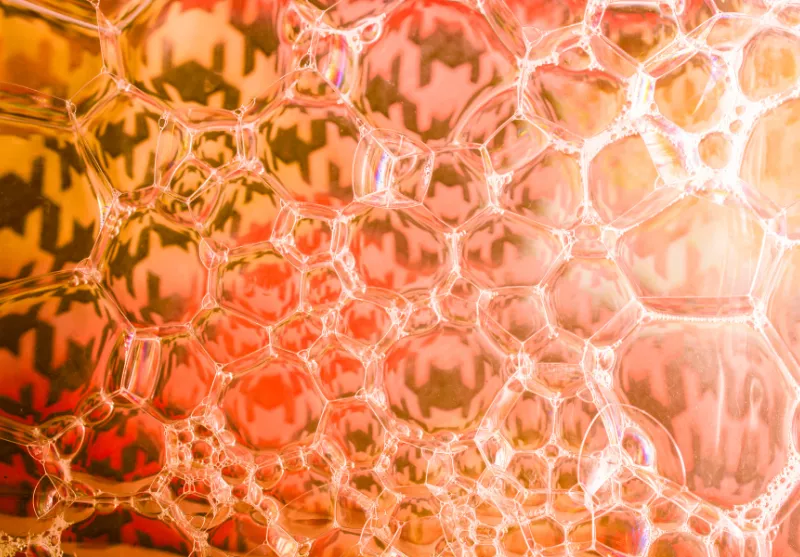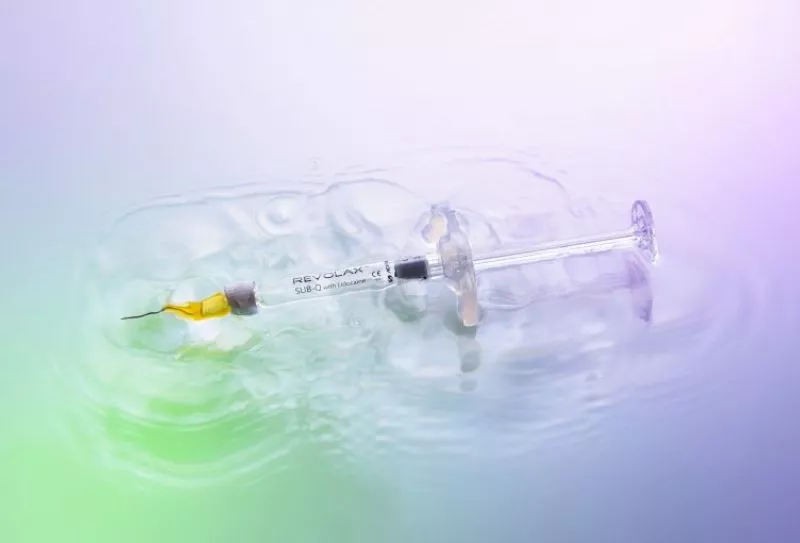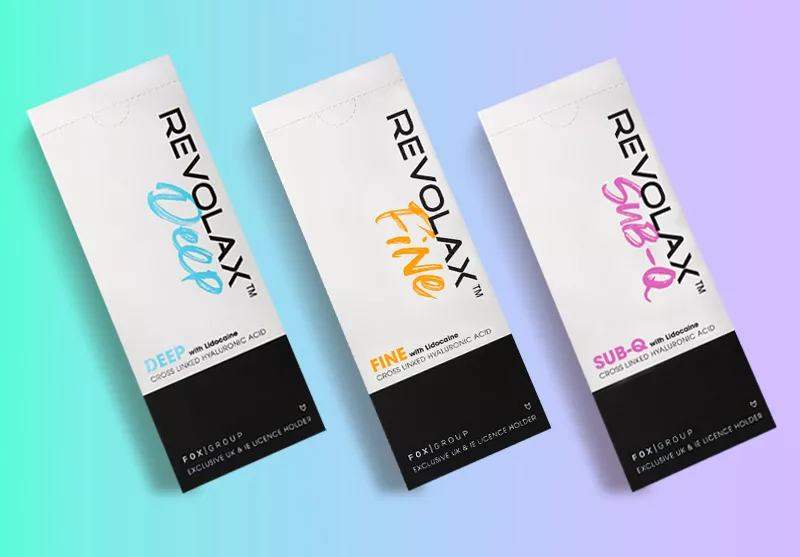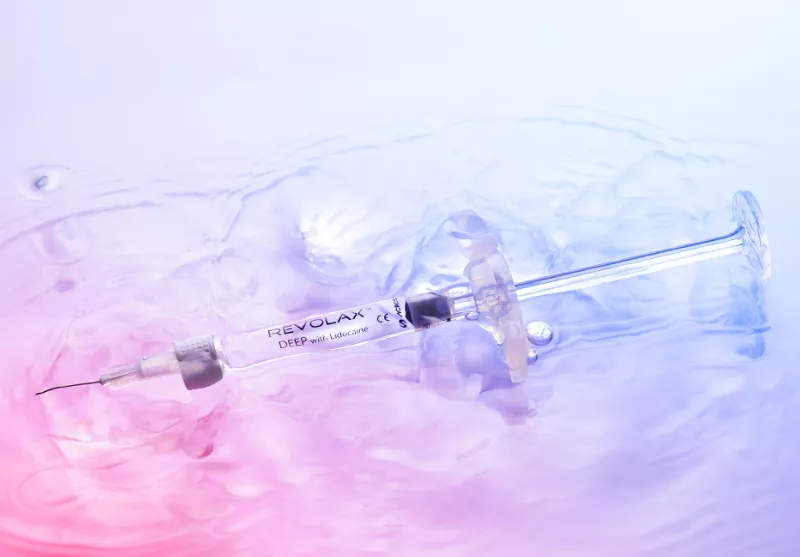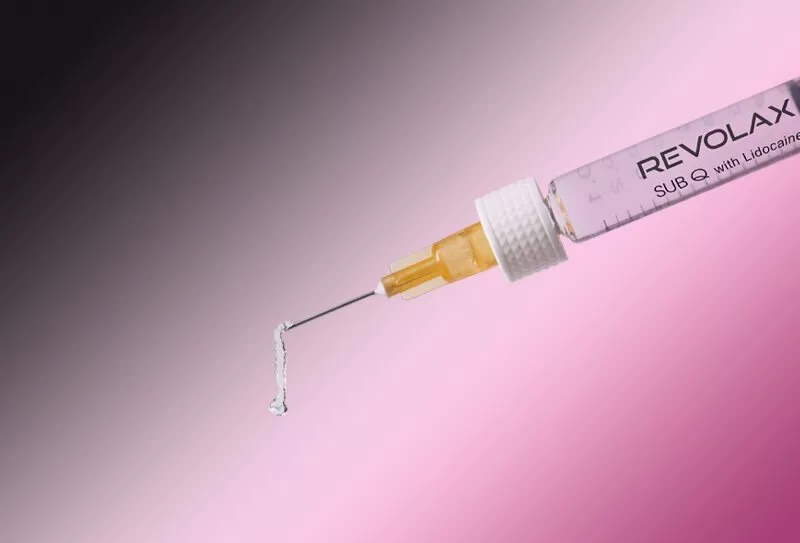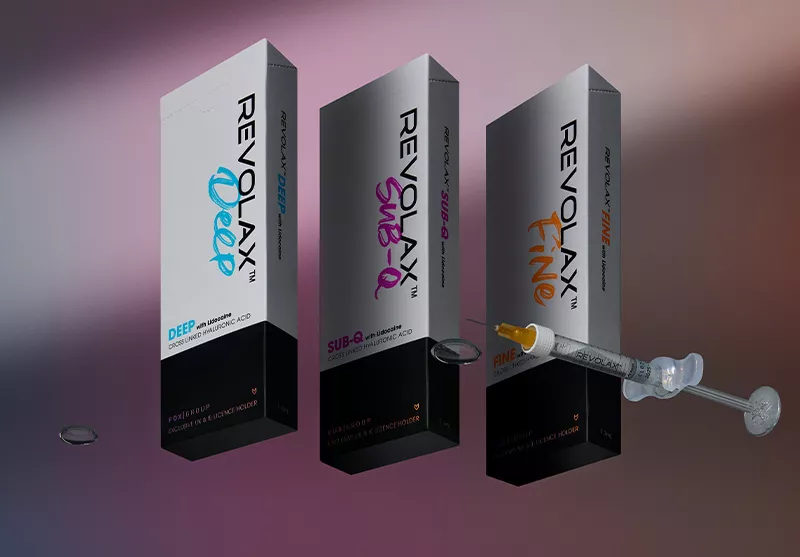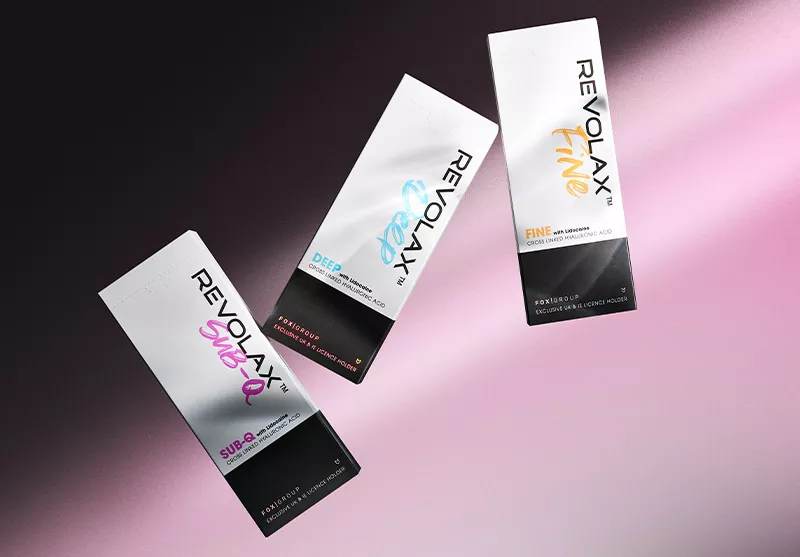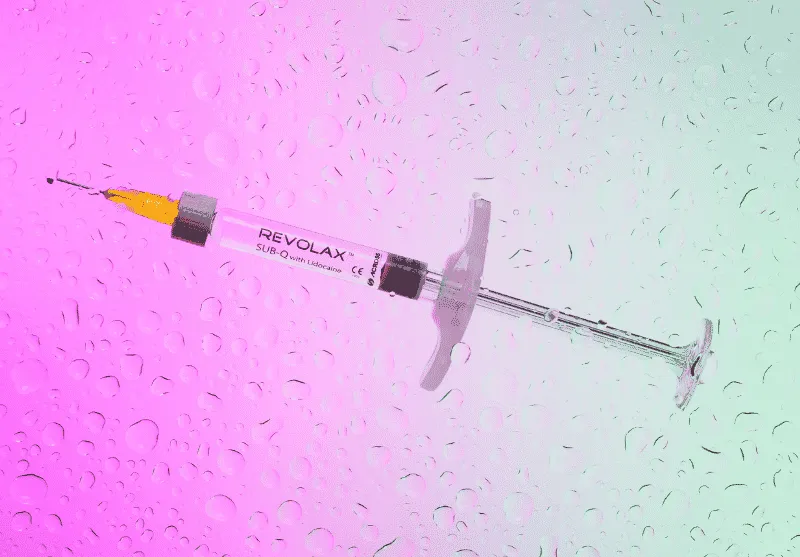Lip fillers have become an incredibly popular treatment that helps to give lips a fuller feel and look. If you have been considering this procedure, it is important to fully understand the treatment to see if it’s right for you.
We have put together a comprehensive guide to lip fillers to help you know what ingredients are used in lip fillers, what types of lip fillers there are, and much more. Continue reading this guide to find out about what is in lip filler and the benefits of The Nation’s Favourite Dermal Filler, REVOLAX.
The Types of Lip Treatments
There are an array of treatments and procedures intended to improve or boost the appearance of lips. Many different ingredients have been used throughout the years to perform these procedures, though the most common is hyaluronic acid through the injection of dermal fillers.
Hyaluronic acid is a natural, easily dissolved substance that is naturally found beneath the skin. As a result, it is one of the most popular choices for lip fillers. It holds many different key attributes, such as moisture retention, that make it a continually popular choice for aestheticians.
Alternatively, some clients opt for skin boosters to improve the appearance of their lips. Skin boosters offer rehydration for the lips and improve their texture, elasticity and firmness. Additionally, the appearance of fine lines is also improved for the client. As opposed to dermal fillers, skin boosters provide rehydration and moisture as opposed to volume.
What Chemical Is Used In Lip Fillers?
Though some may have the misconception that harmful ‘chemicals’ are used in lip fillers, the reality is the opposite as the majority are used with ingredients found naturally in the body. If you are curious about what is in lip filler, the answer is that they are most commonly formulated using hyaluronic acid, the same substance found in REVOLAX. Though there are a vast array of substances that are used, as mentioned above, hyaluronic acid is the most common.
Hyaluronic acid is a naturally-occurring element that is found within the skin. It replenishes incredible amounts of moisture so is ideal for maintaining the appearance of plump and hydrated lips. This is a popular substance as it is easily dissolved with an enzyme, Hyaluronidase, if the intended results aren’t met.
With REVOLAX, its consistency is gel-like and has the structure of a regular and dense lattice. In comparison to other competitors, this means it is smoothly injected and is a more stable and consistent filler. You can find out more information and the specifics as to what chemical is used in our lip filler on our material properties page.
How Long Do Lip Fillers Last?
On average, the perceivable effects of lip fillers last between six and 12 months. However, this can change depending on the type of lip filler used and how quickly your body metabolises it.
Risks and Side Effects of Lip Fillers
With lip fillers, there are typically no fatal side-effects, however there are some minor ones which patients should be aware of. Some swelling, mild bruising and bleeding at the injection site may occur, though these side effects will subside after a couple of days.
As mentioned, serious complications tend not to occur with lip fillers. However, these are some of the uncommon risks that have been reported:
- The filler moving away from the injected area
- Scarring
- Infection
- Irregularities and lumps
- Blocked blood vessels which can result in tissue death and potential blindness.
For this reason, Dr Haffar of Simply Clinics London recommends taking particular steps before the procedure:
“To avoid and minimise any risks, it’s vital to research into a qualified practitioner before you book your appointment. Look into their qualifications, view their client portfolios and before and after photos, and see if you know anyone who has had a treatment done there before.
“Ultimately, dermal fillers are safe when in the right hands and when a high-quality, well-known filler brand is used.”
The above severe risks are typically a result of the work of poor-quality dermal fillers and practitioners. Therefore, REVOLAX is a great choice for lip filler as the finely made composition of a consistently structured lattice ensures it is a safe option.
Aftercare
Generally, the aftercare for lip fillers is relatively simple. The injected area can be a little swollen and sore. However, this should subside within a few days. If you take the aftercare advice that you are offered, the process should be simple. Some common advice given is to avoid alcohol, excessive exercise and facial massages immediately after the procedure.
Conclusion
If you are looking for a high-quality dermal filler that will give you the impressive results you are looking for, choose REVOLAX. As The Nation’s Favourite Dermal Filler, REVOLAX gives you the freedom to be the real you.
In the case of REVOLAX, we recommend using REVOLAX Deep for lip fillers. Thicker than REVOLAX Fine and lighter than REVOLAX Sub-Q, REVOLAX Deep is the ideal intermediary option that offers the ideal consistency for lip fillers.
As REVOLAX is highly cross-linked, the body takes longer to break it down. As a result, REVOLAX’s results last longer compared to other dermal fillers. Backed by surgeons and practitioners nationwide, choose REVOLAX for assured quality and impressive results.
We hope this guide has helped you to know what is in lip filler and help you to understand REVOLAX’s quality and benefits. If you would like to see the results of REVOLAX yourself, take a look at the before and after page.
Have a burning question that you can’t find the answer to? Contact us and our team will be more than happy to help you with any questions you may have about choosing lip fillers or REVOLAX.
